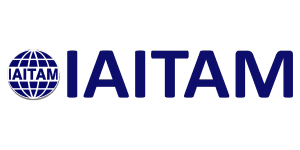Keeping IT Inventory Current and Accurate – Your Organization Depends On It!

It has come up several times in recent discussions with industry professionals that organizations are having issues with various inventory processes, causing an ITAM efficiency nightmare. Whether it’s the lack of a centralized and streamlined process for removing computers and smartphones from discovery once retired, or difficulty retrieving equipment from former employees, inventory process issues decrease our efficiency in managing our organization’s IT assets and cause unnecessary charges to the budget.
How Do We Resolve These Issues and Build Strong Asset ID Practices?
You have to communicate what is expected to your employees. It all begins with your policies and procedures! Provide clear guidelines to all end-users on acceptable use of IT assets, appropriate network connections, the end of life/end of employment device return process, deadlines or required documentation, etc. For example, implement a policy stating that all Work from Home (WFH) employees will ensure they are connected to the corporate network via VPN each week at a set day and time for a routine discovery scan of the IT Environment and ensure that all employees sign off on it, and adhere to it through constant communication with their department leaders when outliers are discovered.
One area that continues to provide a challenge to organizations of every size, structure, and industry around the globe is receiving IT assets back from WFH employees in a timely manner when they resign, or employment is terminated. It’s also difficult to get retired assets back on time during asset refreshments. For many organizations, this is largely because no expectations were set with employees regarding this in the beginning of employment, as the need for WFH wasn’t as great and the value wasn’t as widely recognized. So, we’re lacking the continuous Communication and Education necessary to get these employees’ commitments to due diligence.
How do we resolve that? Start today by taking a self-assessment of your ITAM awareness across all employees, especially WFH employees. Ask yourself these questions:
- Is there a Device Return Policy in place?
- Does it fully support the needs of your office and WFH environment?
- How often is it reviewed and updated?
- Are all employees trained on this policy prior to receiving an IT asset?
- How often do you offer refresher trainings, update trainings, or reminders of this policy to employees?
- Are all employees aware of and committed to the timeframe for return of an EOL asset after receiving a replacement?
- Are all employees aware of and committed to the timeframe for returning their assets in the event of resignation or termination of employment?
- Are all employees aware of and committed to doing what’s necessary to secure the data on their devices prior to return?
- Are there any departments or individuals who are excelling at following the Device Return Policy? (Those are your Project Champions!)
- For which departments or individuals is further training or communication needed?
- Are there any corrective actions outlined in the event of any of the above not being followed?
- Are we getting the support we need from department leaders, Human Resources, etc. to enforce this policy equally across all employees and all asset returns?
The answers to these questions, and the further questions they may uncover will provide the insight you need to identify the core issues behind device returns, and to strategically prioritize the steps you will take to resolve them. Make sure you don’t forget to get feedback from others, such as department leaders, HR, Financial, Executive Stakeholders, Security, Disposition, etc. to ensure you put into place the best possible processes and procedures possible to back up this policy.
How Can Technology Help?
Centralization is the key! When possible, implement tools with automated functionality to reduce the mundane, repetitive tasks involved in Asset Identification and inventory management, and ensure data and documentation integrity. By having a single, centralized IT Asset Repository with data integration functions, such as, merging Terms & Conditions and Compliance Elements from the Contract Management System and linking those documents to the Asset ID for which they relate, we can greatly reduce the risk of missing asset information. By having a designated individual, usually the Certified IT Asset Manager (CITAM), responsible for updating and maintaining this database immediately upon receiving the information you can ensure that all information is accurate and up to date at all times.
Also, by implementing a centralized discovery tool, ensuring that everyone in the organization understands our policies, and establishing clear communication channels during each step of the asset lifecycle and end of life process, we can ensure that retired assets are removed from the discovery tool and their statuses are updated in the repository to reflect storage or disposal in a timely manner and assets are easily returned from WFH environments.
By following best practices and taking proactive steps to ensure accountability throughout every step of the IT asset lifecycle, ITAM can resolve inventory management issues and improve the overall efficiency of the technology assets in the organization’s environment. Everything our Executives and Stakeholders are concerned with is tied to inventory management… financial wellbeing, efficiency & productivity, and of course, security & risk mitigation. Let’s focus on bringing the entire organization together to streamline our processes, ensure our policies are strong and supportive, and manage our inventory in an efficient and sustainable way!
